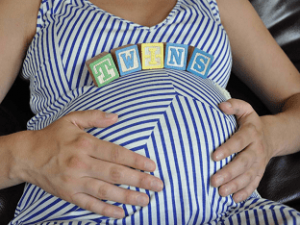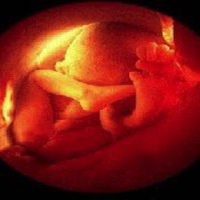 Pregnancy with twins is generally considered as a high-risk pregnancy. Doctors depend on C-section when the pregnancy falls under “high risk”.
Pregnancy with twins is generally considered as a high-risk pregnancy. Doctors depend on C-section when the pregnancy falls under “high risk”.
As the delivery of the twins is more often preterm, it is essential to understand the delivery options. This will make you approach the delivery more confidently.
Despite the fact, women with twin pregnancy, though not in majority, but are still found to give birth vaginally (around 40 %!).How a twin delivery is progresses or ends entirely depends on the position of the babies and the complication possessed by both mother and babies.
Another point to remember is that at some point of vaginal delivery of the twins, the procedure may require instruments like forceps or suction cups (assisted birth) to make the delivery easier. Also, if the mother is heading for a vaginal birth, an epidural for pain is given, foreseeing the possibility of issues that may arise at any time during the twin delivery.
When Does The Delivery Of The Second Twin Occur? The vaginal delivery of the second twin occurs, if all conditions are favorable, around twenty to forty minutes after the first delivery.
What Are The Favorable Conditions That Promote Vaginal Twin Delivery?
Some of the conditions that promote vaginal delivery are:
- Head – down position of the twins: If the first twin is in head-down position or both the twins are in a head down position, then the situation can be said, is favorable to vaginal birth.
- Position of the second twin: After the first twin is born, the doctor will do a vaginal examination and if needed an ultrasound scan too. This will reveal the position of the second child. If the child is in a good position, an easy vaginal delivery through already fully dilated cervix is possible. Even if the contractions are stopped, it can be restarted by introducing hormones through the drip. Even if the second twin is not in the favorable position the doctor can turn the baby to a vertex position which is found to be a success in some cases.
- Pregnancy without any complications: If the mother and her babies are free from the issues that make C-section necessary and if the babies are older than 34 weeks, your doctor suggests for trying a vaginal birth.
Unfavorable Conditions That Prevent Vaginal Twin Delivery?
Some of the conditions that prevent vaginal delivery are:
- Unpromising position of the first twin: When the first twin is in a breech or transverse position, the situation becomes unfavorable for a vaginal delivery. The doctor may be able to deliver a single breech baby vaginally but definitely not the twins.
- Monochorionic twins: Identical twins sharing the same placenta cannot be delivered vaginally.
- Monoamniotic twins: Identical twins that share same amniotic sac inside the mother’s womb make the vaginal delivery risky.
When Is C-section Administrated In A Twin Pregnancy?
- Cord prolapses: When the umbilical cord falls into birth canal ahead of the baby, the situation favors C-section as vaginal birth is impossible.
- Non-progressing labor: If the labor is not progressing as your cervix is not opening and the babies show sign of distress, C-section is administrated.
- Placental Previa: Low lying placenta, which partially or completely covering the cervix – Placenta Previa – is a condition that often associated with a twin pregnancy. This hinder the vaginal birth and favors C-section.
- Previous complicated vaginal delivery: If the previous vaginal delivery (single) was very laborious, the doctors will advise for C-section with the twins.
- Fetal distress: Fetal distress occurs when the baby is deprived of oxygen due to umbilical cord compression, placental abruption,etc.
- Placental abruption: When placenta detaches from the wall of the uterus (the chances are more in twin pregnancy)C-section is administrated.
- Previous C-section: If the mother had a C-section previously, the doctor will not go for a vaginal birth when she is pregnant with twins.
- Pre-eclampsia: If the mother is suffering from severe preeclampsia, decreasing blood flow and oxygen level can lead to C-section.
- Hemorrhaging: If you have a history of severe blood loss or have issues that can cause hemorrhage, C-section is administrated.
What Is Combined Vaginal And Cesarean Section?
This is another procedure of delivery associated with a twin pregnancy. Here, after giving birth to the first twin vaginally, the second twin is delivered through a C-section. This is, in fact, quite a rare occurrence (around 2-3%).The causes can be:
- The first twin is delivered vaginally without any issues. But, it is possible that the second twin’s position doesn’t favor a vaginal birth and the doctors are unable to turn the baby to a deliverable position.
- Another chance is that after delivering the first twin some complications arise (to mother or child) which put the baby’s life at stake. Like:
- Cord prolapse which can lead to cutting the oxygen supply of the second twin.
- Placental abruption in which the placenta tears away from the womb during the first delivery which reduces the oxygen supply to the second twin.
As we always say, in the course of delivery, we can’t expect a 100% guarantee. The complication can appear at any point of procedure which can’t be predicted earlier. Now the only way that remains is to go for an immediate C-section to deliver the second baby.
That is why choosing the hospital and obstetrician is very significant when you are conceived with twins. Always choose an obstetrician who is skilled in delivering twins both vaginally and through a C-section. Make sure the hospital you choose have facilities to take care premature babies (neonatal intensive care unit).
Also, no need to get too anxious if any one or both of your babies gets admitted in the neonatal intensive care unit (NICU), as it is fairly common among the twin babies born with lower birth weight. Stay well nourished, and well hydrated. Think positively. God blessed you with double joy. Think about it. Happy delivery!









